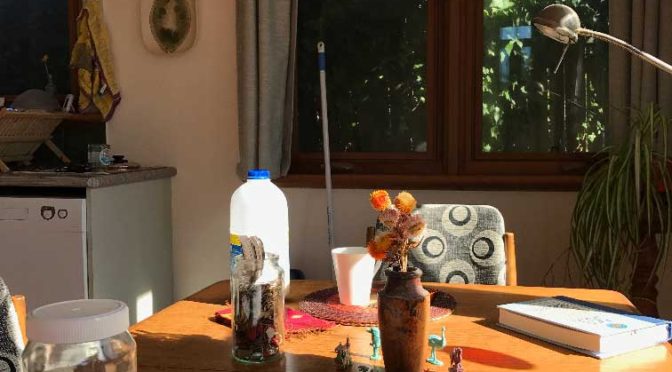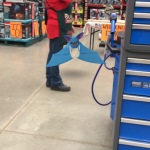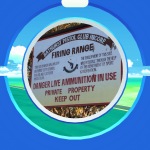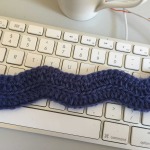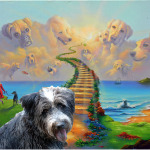 I took this photo as soon as Judy left, struck by all the stories flowing from the things on this table. And the table itself. And the tree you can see through the window. The more I look, the greater the orgy of gratitude. That after everything, I get this table, that shaft of light, that tiny kookaburra with a hole where there was once a tinier black plastic snake.
I took this photo as soon as Judy left, struck by all the stories flowing from the things on this table. And the table itself. And the tree you can see through the window. The more I look, the greater the orgy of gratitude. That after everything, I get this table, that shaft of light, that tiny kookaburra with a hole where there was once a tinier black plastic snake.
So, to explain: Judy came round to drop off a stretch of the crocheted Macquarie River that a group of us have been making. We’ve been doing this since the end of 2015, when we heard a gold mine was sniffing around wanting to divert river water into its cyanide-laced belly and excrete the leavings into the water table feeding the Belubula River. We began stitching, and completely forgot to stop. The river is now about 80 metres long. The decision about whether to sell water to the gold mine is on hold, but as soon as it goes back to Council, our river will be ready to join the fray.
So Judy came to drop off a stretch. This contained a very neat green length stitched by Mum during a visit here, and some orange-bordered fish created by Judy herself. On the weekend, Vi and I will occupy the Girl Guides Hall, stitching the river in the company of local Aboriginal women making a possum-skin cloak. The possum skins for this exercise have come from New Zealand, because possums are a feral animal there.
Judy was in a hurry, had errands to do, is off to Western Australia with her husband, but I convinced her to sit down and have a cup of tea. The house is in uproar, dozens of work-in-progress projects strewn about, but the table was wonderfully bare and inviting. We soon changed that. On the way to the table, before she even got to the table, Judy spotted Gribblies. This is her name for the plastic cereal toys you used to get at the bottom of packets of Cornflakes. A long time ago. Cough. These Gribblies were lying about amongst bits of half-dead succulent and tiny stones in a dusty terrarium on the kitchen counter. She told me they were very valuable. We fished them out and while we drank our tea I lined them up in a circled wagon around the wooden vase in the middle of the table. The pokerwork vase itself (a bit like this) came from my Newtown friend David Haag, who’d found it in an op shop, the design mostly rubbed off. The dried flowers in the vase were everlastings. I told Judy that in Spring, parts of Western Australia are carpeted in these flowers, and the ones in the vase were grown in my back yard in honour of them. Judy is the sort of person who likes such details. She really liked the Gribblies. When she married, she brought her small box of Gribblies and added them to her husband’s bigger box of Gribblies. The Gribblies solemnly mingled together in holy matrimony. The marriage produced two children, and these children obliviously played with them, chewing on them, losing the tiny black snake out of the mouth of the tiny kookaburra.
Talk of collections moved on to a discussion of buttons. Judy said a button tin was one of the “sacred possessions of a woman”. I’m not willing to generalise but I will admit that this is true in my case. I ran and got out my grandmother’s button tin, which lives in the cabinet holding her treadle-powered Singer sewing machine. The round tin itself, which you can see there on the table hails from 1981, which, in the context of my grandmother’s long life, makes it quite “new”. It celebrates the marriage of Lady Di and Prince Charles, son of the man who is, as it turns out, Not Dead.
Judy’s hands moved swiftly. These are war buttons, she said, grouping them together. I peered more closely. Gee. Yes. Buttons from army uniforms, and what looks like airforce uniforms, or are they all army? These are buttons from work shirts. Fancy buttons from coats from the 1930s. I went for the self-covered buttons. Mum was a dressmaker when I was little, and I enjoyed watching her cut a circle of fabric and use a special contraption to press them into something so neat and perfectly stretched. Judy wasn’t so into the covered buttons. Her Mum never used to do that. In all of this, my grandmother’s hands. Here are her hands at work. Here she is carefully sliding small buttons onto the shaft of a safety pin to keep them all together. Here she is wrapping a piece of wire around a finger. Here she is dropping a round plastic Tiddlywink into the collection because it is round and plastic and button-like. Here she is snipping the metal pieces out of the back of a bra because they might come in handy, later. She is here.
And there was a tiny glass jar with some white covered buttons in it and a tiny scrap of paper, hand written. A message in the bottle, written to the future. To her descendants. “Buttons from my Moroccan wedding dress”.
And then Judy and I confessed our love of picking things up out of the ground. A shard of willow pattern plate. A nice piece of green or blue glass. So I ran back to my study and brought forth the large jar labelled Blayney Road Common. I pick things up when I go walking with Bertie (and earlier with Taro, when she was still walking; her bones are now resting peacefully in the back yard). The jar had a bit of dirt in it still clinging to bits of metal and a whole bakelite light switch, so I grabbed a bit of newspaper off the pile to protect the table. Newspaper. Such an ordinary thing, but threatened. It will be quaint, in the not-too-distant future. Yellowed newspaper will be like other things of the past that nobody uses any more, like box Brownie cameras or manual typewriters. Fairfax reporters are on strike. It’s important to fight, but we all know it’s over. Not for journalism itself, hopefully, but for newsprint. For piles of inked paper lying carelessly around houses, ubiquitous, used to wrap scraps or start fires. Still, today I have a house with a pile of newspapers in it, and I used a bit to protect the table that was passed on to us by Steve’s Mum. It’s a piece of light mid-century furniture. It pulls out to a longer version if there are more people to seat. Judy and I talked about how found bits of glass and ceramic are more interesting than gold. Gold may be beautiful but it doesn’t exercise our minds. This tiny bit of pink flower might have been a teacup that might have been used by a woman a hundred years ago. She might have taken sips of tea as she sewed buttons on her children’s coats.
What else is in the picture of my table? The tree through the window where our own possums – protected native animals, not allowed to surrender their skins to Aboriginal women who might like to make a cloak – spend their nights prowling for something to eat, things to do. They clatter across the roof at dusk and dawn. There are three of them. What looks to be a teenager and a mother with a joey riding on her back. I love their big eyes, their cute pink noses They are wrecking havoc in the ceiling cavity. They have to go, but that means another project on the to-do list that is already very long and doesn’t include stolen mornings over tea and a button collection. And on the wall there’s the cockroach painting created by my artist friend Karen Golland out of sequins and there are the little woven mats Steve and I bought in Peru? Bolivia? and the Country Women’s Association cookbook, a new one Mum gave me only last year, and the collection of ring-pulls from Mount Panorama telling the stories of wild weekends of beer and car races and a spider plant that I call Deb after my sister because she gave me the plant (or its ancestor) and there are more stories in that picture but this will have to do for now.
Judy and I admitted we were borderline hoarders and discussed the minimalist movement that is fighting the good fight against clutter. But I don’t see clutter. It’s only clutter if there are no stories attached. Until the stories have finally and fully leached out, I’m quite happy to live amongst these things.
